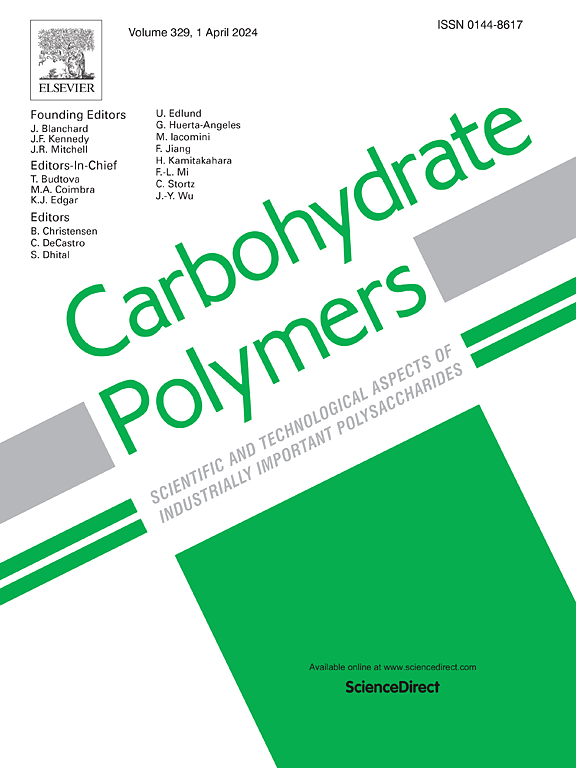Further understanding the unique structure derived from interaction of soy proteins with acylated starch of various chain-length short-chain fatty acids
IF 10.7
1区 化学
Q1 CHEMISTRY, APPLIED
引用次数: 0
Abstract
Waxy maize starch was acylated via different chain-length of short-chain fatty acids (SCFAs) (referred to AS, PS and BS, respectively), followed by investigation of their structural characteristics of complexes formed between the acylated starch and soy protein isolate (SPI) via FTIR, NMR, XRD and CLSM, etc. This is the first time to reveal that ζ-potential value of the complexes between two polymers was proportional to chain length of SCFAs. The occurrence of new peak at 1580 cm−1 in AS-SPI, PS-SPI and BS-SPI might imply the interaction between NH2 group of SPI and hydroxyl group of acylated starch. Consistently, disappearance of characteristic peaks OH-2, 3 (5.40, 5.50 ppm) from 1H-shift in NMR further evidenced covalent reactions between two polymers. Interestingly, although acylation reduced crystallinity, new diffraction peaks at 7.5°, 14.5° and 19.8° of WMS-PS and WMS-BS revealed the formation of V-type crystalline structure rather than WMS-AS, indicating the importance of chain length of SCFAs for manipulating complexes structure. Furthermore, G′ of BS-SPI complexes was greater than G″ under various frequency, but not for other types of complexes. Meanwhile, BS-SPI complexes demonstrated a better encapsulation wall for probiotics protection against gastrointestinal digestion, which might indicate association of structural characteristics with functionality.

求助全文
约1分钟内获得全文
求助全文
来源期刊

Carbohydrate Polymers
化学-高分子科学
CiteScore
22.40
自引率
8.00%
发文量
1286
审稿时长
47 days
期刊介绍:
Carbohydrate Polymers stands as a prominent journal in the glycoscience field, dedicated to exploring and harnessing the potential of polysaccharides with applications spanning bioenergy, bioplastics, biomaterials, biorefining, chemistry, drug delivery, food, health, nanotechnology, packaging, paper, pharmaceuticals, medicine, oil recovery, textiles, tissue engineering, wood, and various aspects of glycoscience.
The journal emphasizes the central role of well-characterized carbohydrate polymers, highlighting their significance as the primary focus rather than a peripheral topic. Each paper must prominently feature at least one named carbohydrate polymer, evident in both citation and title, with a commitment to innovative research that advances scientific knowledge.
 求助内容:
求助内容: 应助结果提醒方式:
应助结果提醒方式:


